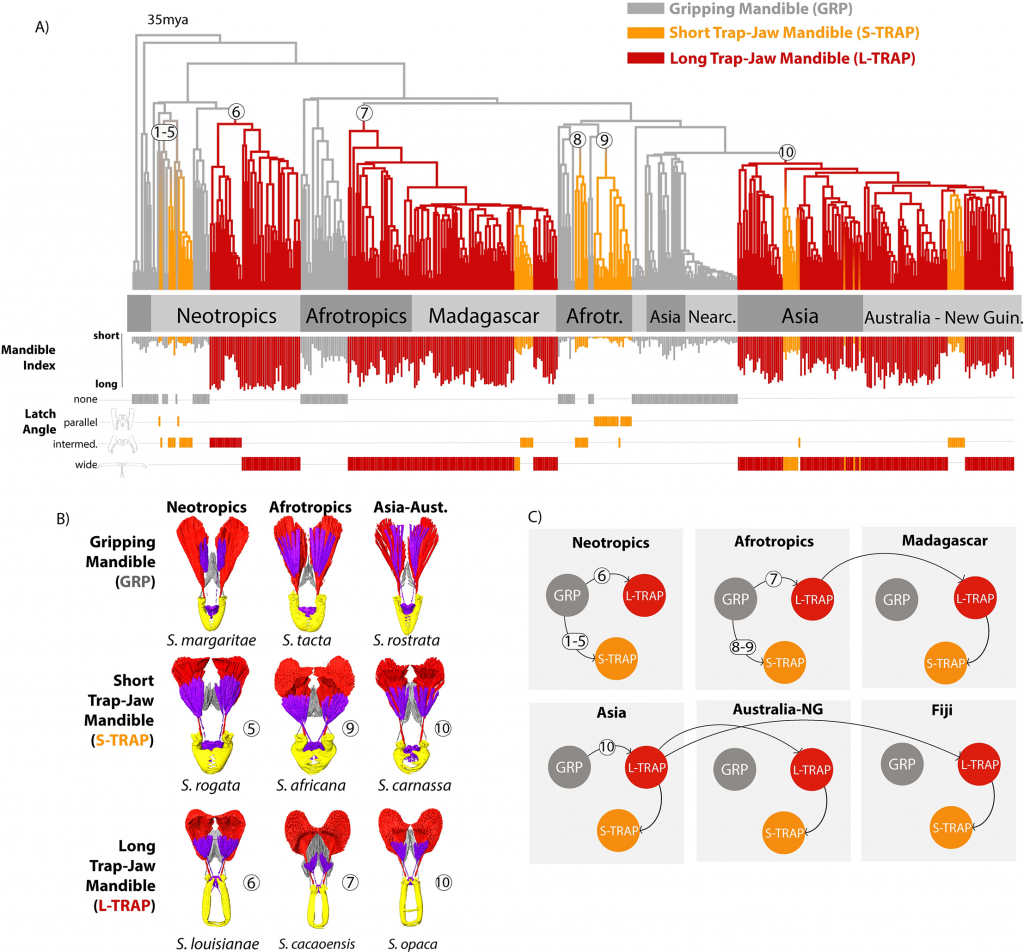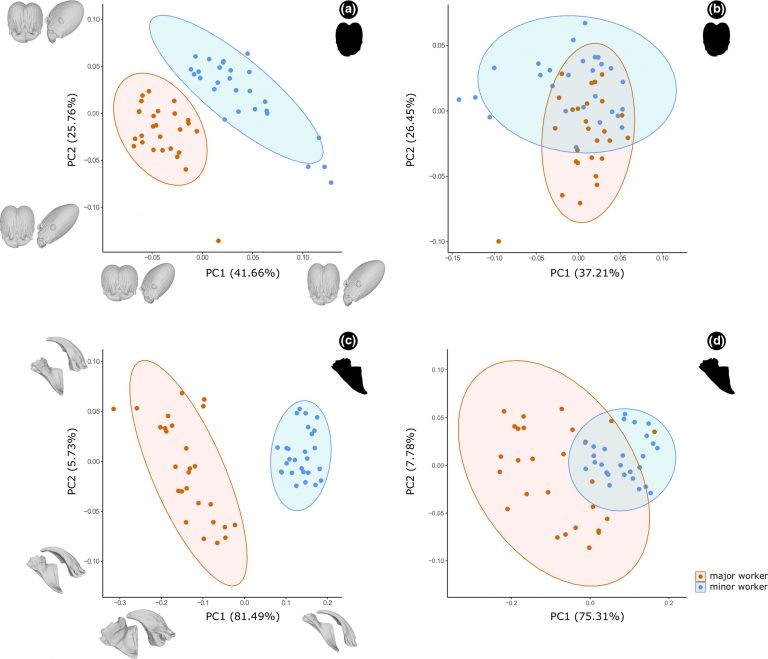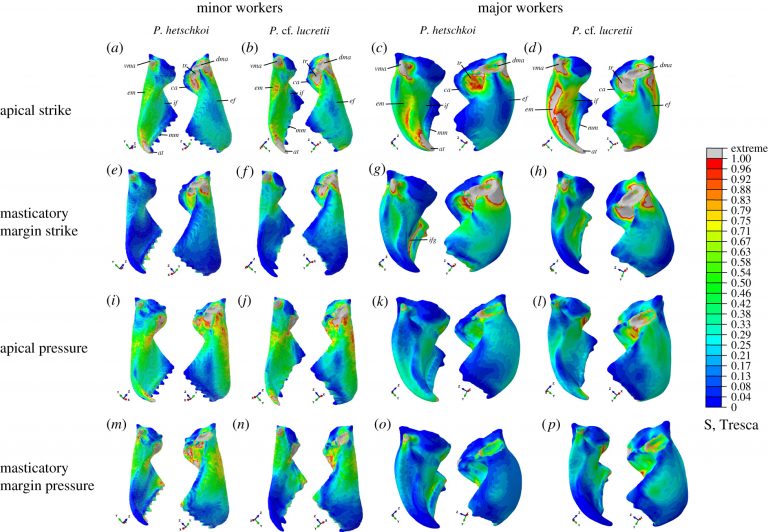One of the most striking features of ant diversity is the sheer variety and ingenuity of mandibles. Mandibles are a primary way that ants interact with the world, and are used as diverse tools for many tasks and purposes. Ant mandibles are cutters and carriers, but also trap-jaws, snap-jaws, millipede shavers, seed millers, wood borers, and beyond. There are truly a huge number of mandible shapes and functions to explore from ecological, evolutionary, biomechanical, and developmental perspectives. We have a number of projects with collaborators ongoing about these interesting structures, here’s a little tour:
First up here’s a broad look at the diversity of ant mandibles, segmented from micro-CT scans by our PhD student Julian Katzke. Julian is doing his thesis surveying the diversity of mandibles, building a massive dataset across the tree of life, and analyzing their evolution. How many morphotypes are there, how many times have they evolved? Are there macroevolutionary pathways for their evolution (i.e. certain shapes tending to evolve into other shapes)? Julian is working on it.

A related topic is the structure of the muscles inside the head and its supporting endoskeleton. In scanning ants, we have found there is at least as much diversity in these structures inside the head as the mandible outside. Julian is working on analyzing that too.

Within that diversity, there are some really interesting innovations and adaptations. A major project in the lab in the past years is the evolution of Strumigenys trap jaw ants. Strumigenys are a globally distributed, hyperdiverse group with a variety of mandible types.

We found the trap-jaw mechanism has evolved between 7-10 times, and identified functional stepping stones that could explain how it may have evolved. Read the paper (Booher et al. 2021, PLoS Biology) and see Evan’s twitter thread to dig into this more.

PhD student Gaurav Agavekar is following this up by investigating the genomic and developmental basis of this convergent evolution.
Another recent collaborative study focused on the wood-boring ant, Melissotarsus, the only ant to live completely in tunnels it carves in living wood, and one of the wildest ants out there. We found a number of adaptations to help chew through living wood, including changes to head musculature and interesting conical mandibles. This study was led by Adam Khalife and the late Christian Peeters, was published in Frontiers in Zoology.

And there are other mysterious species, such as Protanilla lini which has a very odd mandibular articulation with the head. Some think it may have a power-amplifying function, however this is still unclear. We recently looked at this species in a study led by Adrian Richter in collaboration of our lab. Julian made an animation of head movement to try to understand it.

Aside from these more exotic examples, we still lack a basic understanding of what axes of morphological and functional variation underlie normal triangular mandibles. How does shape vary with ecology and performance? Two recent studies help shed light on this.
First, our now postdoc Ale Casadei-Ferreira and colleagues analyzed ecology-mandible correlations and integration in the evolution of mandibles and head shape, focusing on Pheidole majors and minors.

Second, Christian Klunk and colleagues used finite element analysis to analyze Pheidole mandibles, helping to understand how different mandible shapes reflect tradeoffs in force vs. speed, and how stress moves through the mandible shapes.

For more general discussion of the mandibles in context of the head, recent papers by Adrian Richter and various collaborators surveying the head anatomy of different ants are a must-read.
Of course there is lots of other great work going on out there by other labs, for example a terrific recent study by David Labonte’s lab on bite force allometries in Atta leafcutter ants.
There’s much more to come from our lab and others on the morphology, functional ecology, evolution, and development of these diverse tools ants use to interact with the world.
